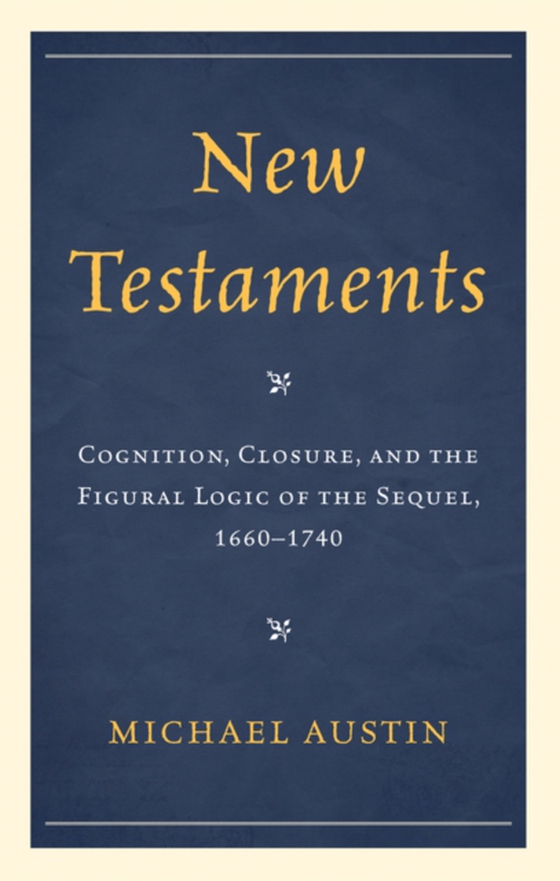
New Testaments e-bog
911,46 DKK
(ekskl. moms 729,17 DKK)
In the seventeenth and eighteenth centuries, popular works of literature attractedas they attract todaysequels, prequels, franchises, continuations, and parodies. Sequels of all kinds demonstrate the economic realities of the literary marketplace. This represents something fundamental about the way human beings process narrative information. We crave narrative closure, but we also resist its fi...
E-bog
911,46 DKK
Forlag
University of Delaware Press
Udgivet
25 november 2011
Længde
192 sider
Genrer
Literary studies: general
Sprog
English
Format
epub
Beskyttelse
LCP
ISBN
9781611493658
In the seventeenth and eighteenth centuries, popular works of literature attractedas they attract todaysequels, prequels, franchises, continuations, and parodies. Sequels of all kinds demonstrate the economic realities of the literary marketplace. This represents something fundamental about the way human beings process narrative information. We crave narrative closure, but we also resist its finality, making such closure both inevitable and inadequate in human narratives. Many cultures incorporate this fundamental ambiguity towards closure in the mythic frameworks that fuel their narrative imaginations. New Testaments: Cognition, Closure and the Figural Logic of the Sequel, 1660-1740 examines both the inevitability and the inadequacy of closure in the sequels to four major works of literature written in England between 1660 and 1740: Paradise Lost, The Pilgrim's Progress, Robinson Crusoe, and Pamela. Each of these works spawned sequels, whichwhile often different from the original worksconnected themselves through rhetorical strategies that can be loosely defined as figural. Such strategies came directly from the culture's two dominant religious narratives: the Old and New Testaments of the Christian Bibletwo vastly dissimilar works seen universally as complementary parts of a unified and coherent narrative.
 Dansk
Dansk

